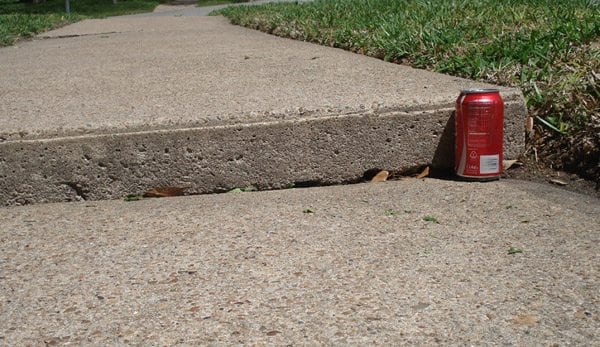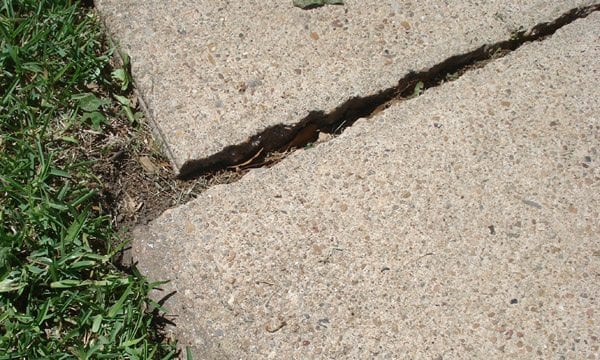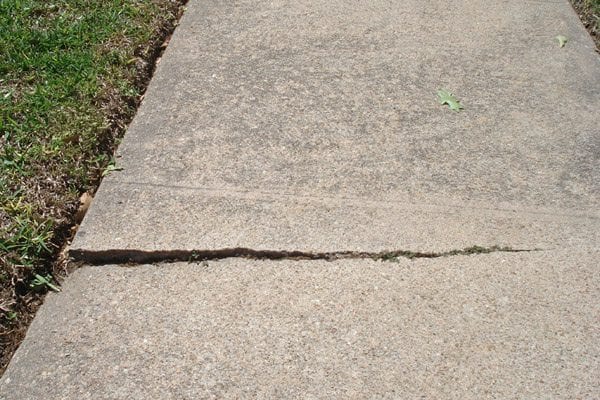Moving Sidewalks
Sidewalks are very similar to concrete slab home foundations. They provide a level surface that is designed to carry weight – the weight of walking people. Sidewalks also use the soil for support. And that is when the problems start.
Sidewalks have Problems?
How can something as simple as a concrete sidewalk have problems? Well, it is simple. The clay soils underneath the sidewalk have absorption properties like a sponge. During hot dry weather the clay soils can shrink dramatically in volume. When the soils shrink the sidewalk will fall in elevation – a process known as Settlement.

Notice the photo above of a section of sidewalk. One portion of the sidewalk has fallen almost 5 inches below an adjoining section. Why? There could be several reasons for this – it could be the soil was not compacted properly before the concrete was poured. Or it’s elevation could have been slightly lower at the time of construction and water penetration has gradually compacted the soil underneath. Or it could be the natural part of non-uniform shrinkage of the clay soil during a summer drought. Or it could be a combination of any of the above. Regardless, the concrete sidewalk has “settled” or fallen almost 5 inches below its original elevation. This is an example of what happens to home foundations – they settle too.
Sidewalks Moving Sideways?
Yes. The forces of soil movement are very strong and they move laterally as well as vertically. Please notice the photo below and see how a section of sidewalk has moved laterally 2 inches. The clay soil underneath the sidewalk has undergone a series of weather changes over the years. At times the soil has become very wet and expanded in volume. In the next season the clay soil has become very dry during the summer and shrunk in volume. This repeated expansion and contraction in volume is not uniform and the result is that part of the sidewalk is no longer in alignment. This is another example of the stresses clay soils can place on your home’s foundation.
Sidewalks Crack Too!
It is the same problem – clay soils. Expanding and Contracting every year – wet season and dry season. When the clay soil pushes the sidewalk above its original elevation this is called Upheaval. It is usually not a uniform force and can easily crack a section of concrete. And when the clay soil shrinks dramatically then a section of the concrete has no support. Like a home foundation, when the area of soil shrinkage becomes large enough the concrete slab will crack and “fall down” (settle) until it finds its support – the shrunken soil.
These three photos of moving sidewalks show how clay soils can damage a concrete sidewalk – Settlement, Upheaval, Cracks – and these same forces of soil movement are being applied to your home’s concrete slab foundation. Can your foundation resist these forces?


